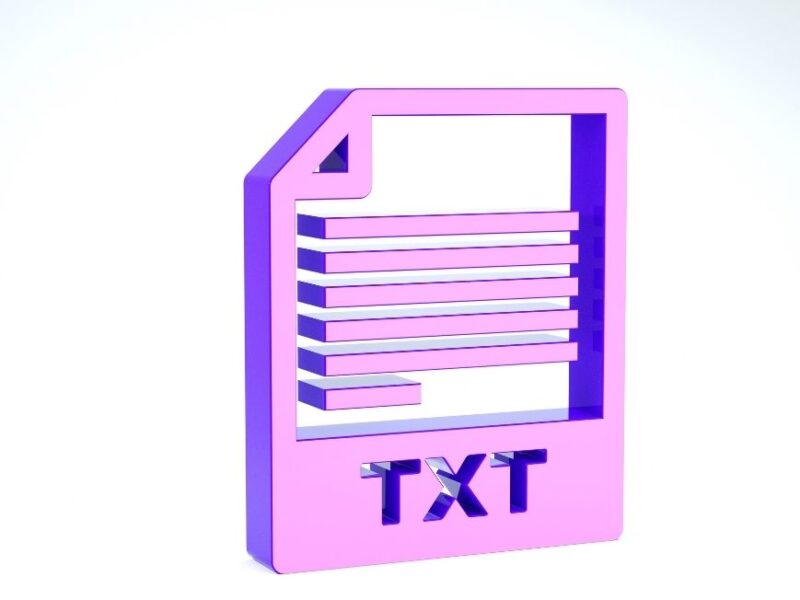On this page you will read detailed information about llms.txt.
In the ever-evolving landscape of digital technology, understanding new tools and protocols is essential for staying ahead. You may have come across the term “llms.txt” and wondered about its significance and application. This article delves into the intricacies of llms.txt, a pivotal file format gaining traction in data management and artificial intelligence fields. By exploring its key functions, you will gain insights into how this enigmatic text file can optimize processes and enhance efficiency in your professional endeavors. Embark on this journey to uncover the transformative potential of llms.txt in your digital toolkit.
Understanding llms.txt: An Overview
The Genesis of llms.txt
The introduction of llms.txt marks a pivotal moment in digital documentation, offering a streamlined means to manage large language models (LLMs). As these models become increasingly integral to various applications, understanding what is llms.txt and its core functions becomes vital. Essentially, llms.txt serves as a configuration file designed to facilitate the seamless integration and management of LLMs within diverse systems, ensuring compatibility and functionality across platforms.
Core Functions and Features
At its core, llms.txt provides a blueprint for setting parameters and guidelines that govern the operation of language models. This includes specifying model versions, defining input-output parameters, and detailing any dependencies required for optimal performance. By centralizing this information, llms.txt simplifies the process of deploying LLMs, reducing potential errors and enhancing efficiency.
- Model Specifications: llms.txt allows users to outline key model characteristics, ensuring that applications utilize the intended version and configuration. This is crucial in maintaining consistency and reliability across deployments.
- Operational Guidelines: By detailing operational parameters, llms.txt ensures models are used as intended, adhering to predefined guidelines that enhance performance and compatibility.
Enhancing Interoperability
One of the standout features of llms.txt is its contribution to interoperability. By creating a standardized format for defining model parameters and requirements, it enables different systems and applications to work seamlessly with various LLMs. This standardization is particularly beneficial in environments where multiple models or platforms are in use, as it reduces the complexity associated with integrating disparate systems.
In conclusion, understanding what is llms.txt goes beyond mere knowledge of its structure; it requires an appreciation of its role in optimizing the utilization and management of large language models. As the landscape of digital interaction evolves, llms.txt stands as a crucial component in ensuring that the implementation of LLMs is both efficient and effective.
What Is llms.txt and How Does It Work?
Understanding llms.txt
The llms.txt file can be seen as a crucial tool in the landscape of large language models, offering a systematic way to manage and interact with these advanced AI systems. Essentially, llms.txt serves as a configuration file designed to streamline the process of defining parameters and operational directives for large-scale language models. By centralizing these details, llms.txt enables developers to efficiently manage model functionalities and integrations, enhancing both performance and usability.
Key Functions and Mechanisms
At its core, llms.txt operates as a repository of instructions that inform the language model about the tasks it is expected to perform. It outlines key functions such as model tuning, data processing, and operational constraints, which are integral for optimizing AI outputs. This configuration file can dictate how a model processes input data, the scope of its training data, and the ethical guidelines it must adhere to during operation. Moreover, it can be tailored to specify particular domains or contexts, ensuring that the output is relevant and precise.
Enhancing Usability and Efficiency
By employing llms.txt, developers benefit from a streamlined interface that simplifies complex model configurations. This not only accelerates deployment times but also enhances the overall efficiency of language models. For instance, when a new model is introduced, llms.txt allows for quick adjustments to be made in response to evolving requirements or feedback, ensuring continuous improvement without extensive manual reprogramming.
In conclusion, understanding what is llms.txt and its functionalities is imperative for those working with large language models. Its role in managing and optimizing AI systems underscores its importance in the continued advancement of artificial intelligence technologies.
Key Functions and Features of llms.txt
Efficient Management of Language Models
One of the primary functions of llms.txt is to streamline the management of large language models (LLMs). By serving as a centralized configuration file, llms.txt simplifies the process of handling various LLM functionalities, such as model updates, parameter adjustments, and performance monitoring. This ease of management allows for efficient utilization of computational resources, ensuring that the models operate at optimal capacity. Users can swiftly adapt to new requirements or adjustments, which is particularly beneficial in fast-paced environments where agility is crucial.
Enhanced Compatibility and Integration
Another significant feature of llms.txt lies in its ability to enhance compatibility across different software environments. By housing model configurations in a standardized format, llms.txt ensures seamless integration with various platforms and applications. This interoperability means that developers can focus on building features without worrying about compatibility issues, thus fostering innovation and speeding up development timelines. Moreover, llms.txt facilitates smoother transitions when updating or swapping models, minimizing downtime and ensuring continuity of operations.
Improving Transparency and Traceability
In addition to management and compatibility, llms.txt plays a crucial role in improving transparency regarding model configurations and changes. By maintaining a clear and accessible record of model parameters and updates, it allows stakeholders to track modifications over time. This traceability is essential in environments where accountability is paramount, as it provides a documented history that can be referenced during audits or reviews. Furthermore, having a detailed log of changes enhances collaborative efforts by ensuring all team members are informed about the latest model configurations.
Ultimately, the utility of llms.txt in managing language models cannot be overstated. It not only enhances operational efficiency but also fosters an environment of transparency and seamless integration, making it an indispensable tool in the realm of language model management.
The Importance of llms.txt in Modern Technology
A Central Role in Data Management
In the rapidly evolving landscape of modern technology, llms.txt emerges as a critical tool for data management. Its structured approach to data handling allows for seamless integration and accessibility across various platforms and applications. By serving as a comprehensive repository, llms.txt ensures that data remains organized and easily retrievable, which is especially crucial in today’s data-driven world.
Enhancing System Interoperability
One of the key functions of llms.txt is to enhance interoperability between different systems. As technology ecosystems grow more complex, the ability to communicate and exchange information effortlessly becomes paramount. Llms.txt facilitates this by providing a standardized format for data exchange, thereby reducing the friction often encountered when disparate systems attempt to interact. This standardization leads to improved efficiency and reduced operational costs for businesses.
Supporting Advanced Analytics
In addition to improving interoperability, llms.txt plays a vital role in supporting advanced analytics. The structured data it manages becomes a powerful asset for generating insights through machine learning and artificial intelligence. By organizing and making data accessible, llms.txt enables advanced analytical tools to function optimally, unlocking new opportunities for businesses to harness the power of their data.
Future-Proofing Technological Frameworks
As technology continues to advance, ensuring that systems are future-proof is a significant challenge. Llms.txt provides a solution by offering a flexible framework that can adapt to emerging technologies and standards. This adaptability ensures that organizations remain competitive and can seamlessly incorporate new innovations without disrupting their existing infrastructure.
In summary, the importance of llms.txt in modern technology cannot be overstated. By enhancing data management, facilitating system interoperability, supporting advanced analytics, and future-proofing technological frameworks, it stands as an indispensable component in the digital age.
In the previous post, we had shared information about Building Quality Backlinks: Strategies for SEO Success, so read that post also.
Future Trends in llms.txt Applications
Integration with AI Technologies
As the digital landscape evolves, the integration of llms.txt with advanced AI technologies is poised to revolutionize its applications. By incorporating machine learning algorithms, llms.txt can become a dynamic tool that anticipates user needs, offering real-time updates and recommendations. This evolution could see llms.txt transforming from a static file to an adaptive system, capable of interacting seamlessly with AI-driven platforms. Such integration can enhance user experiences, providing more tailored content and efficient navigation.
Enhanced Content Management
Looking ahead, llms.txt could play a pivotal role in streamlining content management processes. Its potential to serve as a central repository for metadata about large language models can significantly improve the organization and retrieval of information. As content needs grow exponentially, llms.txt might become instrumental in categorizing and indexing data, facilitating easier access and management. This heightened functionality can help businesses and individuals manage their digital assets more effectively, ensuring that the right content reaches the right audience.
Privacy and Security Measures
With the increasing focus on data privacy and security, future developments in llms.txt may include robust features designed to safeguard sensitive information. Implementing encryption and advanced user authentication within llms.txt can help protect against unauthorized access and data breaches. As regulatory frameworks evolve, llms.txt will likely adapt to ensure compliance, offering users peace of mind that their data is handled securely and ethically.
In conclusion, the potential advancements in llms.txt applications are vast and varied. As these trends unfold, llms.txt is expected to become an indispensable tool, driving innovation across multiple industries and setting new standards for content management and security.
Conclusion
As you navigate the evolving landscape of digital content management, understanding the intricacies of tools like llms.txt becomes invaluable. This tool not only streamlines the way language models interact with your data but also ensures that your content remains secure and relevant in a rapidly changing environment. By leveraging the strategic functions of llms.txt, you can optimize efficiency, enhance data privacy, and maintain a competitive edge in your field. Embracing these advancements empowers you to make informed decisions, ultimately fostering a more dynamic and responsive digital strategy. Stay ahead by integrating llms.txt into your operational framework today.
Disclaimer
The content published on the Marketyra blog is for educational and informational purposes only. While we strive to share accurate and up-to-date digital marketing tips, strategies, and trends, we do not guarantee any specific results. Readers are advised to use their own judgment before applying any tips or advice provided. Marketyra is not liable for any losses, damages, or issues arising from the use of blog content.
So friends, today we talked about llms.txt, hope you liked our post.
If you liked the information about llms.txt, then definitely share this article with your friends.
👉 Need help with SEO or digital marketing services?
Feel free to call us at 📞 +91-9306925861, email us at 📧 admin@marketyra.com to get in touch!






